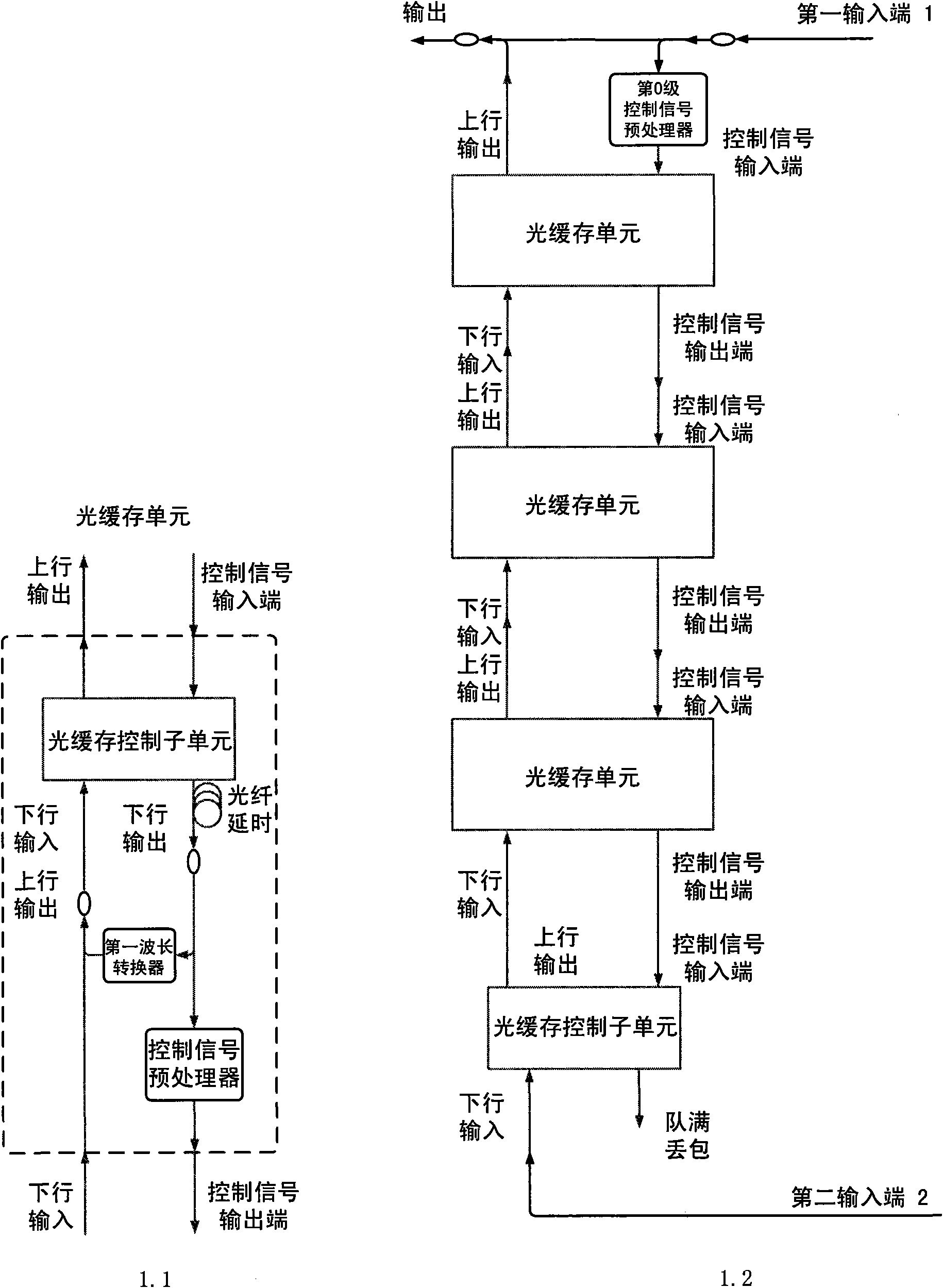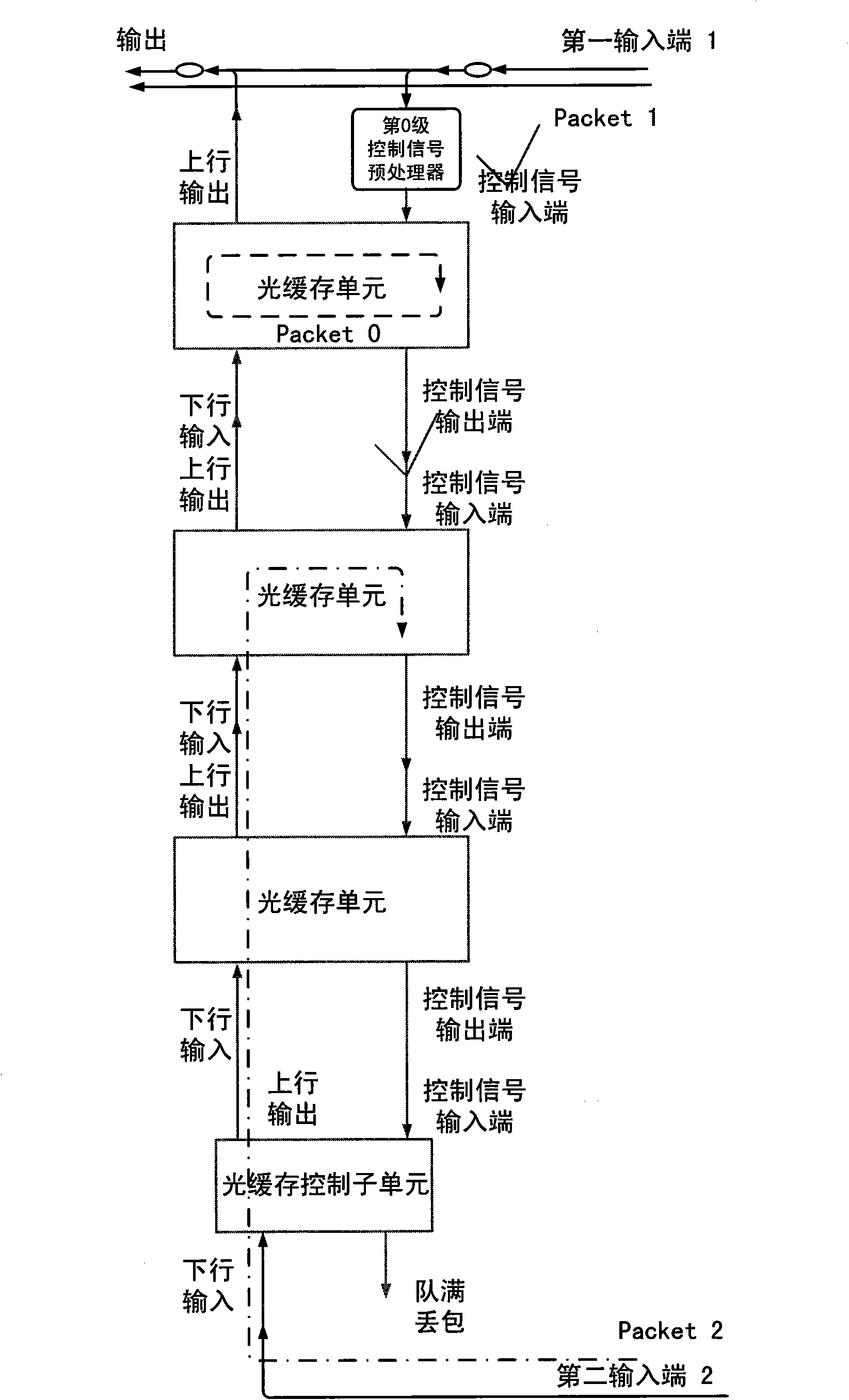Queue-type all-optical buffer
An optical buffer and optical buffer technology, applied in the field of information optoelectronics, can solve the problems of data packet output first, deterioration of data packet signal-to-noise ratio, system complexity and high cost
- Summary
- Abstract
- Description
- Claims
- Application Information
AI Technical Summary
Problems solved by technology
Method used
Image
Examples
Embodiment Construction
[0040] The key of the present invention is that the optical buffer control subunit in the optical buffer unit is used to control whether the data packet is to be buffered. When a control signal is added to the control signal input end of the optical buffer unit, the data packet is Internal cache, otherwise, it will be output upwards from the upstream output terminal. The wavelength of the demultiplexer DEMUX in the optical buffer control subunit is λ iA The output end of the optical buffer unit constitutes the uplink output end, and the other wavelength is λ iB The output end of the circuit is divided into two paths after passing through the delay fiber, one of which passes through the first wavelength converter to convert the wavelength into λ iC After that, it is coupled with the downlink input end of the optical buffer unit and connected to the data input end of the second wavelength converter in the optical buffer control subunit, and the other path forms the control sign...
PUM
 Login to View More
Login to View More Abstract
Description
Claims
Application Information
 Login to View More
Login to View More - R&D
- Intellectual Property
- Life Sciences
- Materials
- Tech Scout
- Unparalleled Data Quality
- Higher Quality Content
- 60% Fewer Hallucinations
Browse by: Latest US Patents, China's latest patents, Technical Efficacy Thesaurus, Application Domain, Technology Topic, Popular Technical Reports.
© 2025 PatSnap. All rights reserved.Legal|Privacy policy|Modern Slavery Act Transparency Statement|Sitemap|About US| Contact US: help@patsnap.com



